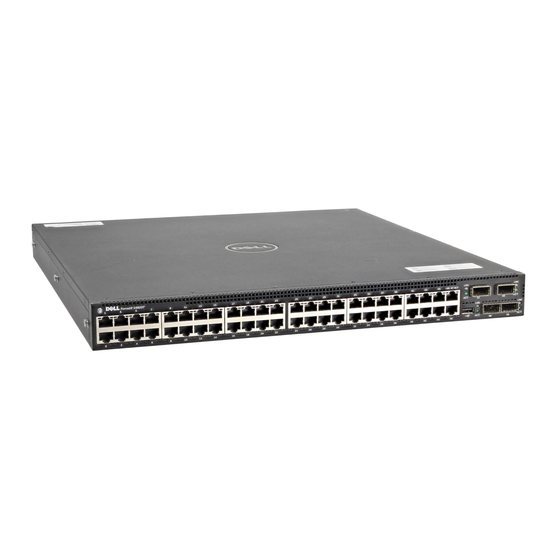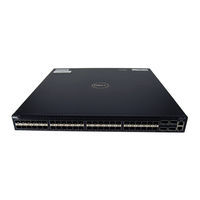
User Manuals: Dell S4820T Network Switch
Manuals and User Guides for Dell S4820T Network Switch. We have 3 Dell S4820T Network Switch manuals available for free PDF download: Configuration Manual, Manual, Installation Manual
Dell S4820T Configuration Manual (1178 pages)
Table of Contents
-
-
Audience36
-
Conventions36
-
-
-
4 Management
65 -
-
802.1Ag
95-
Ethernet CFM95
-
-
Enabling CCM103
-
-
-
802.1X
110-
-
EAP over RADIUS112
-
-
Enabling 802.1X114
-
-
-
-
IP Prefix Lists145
-
ACL Resequencing150
-
Route Maps152
-
-
How BFD Works166
-
BFD Sessions169
-
Configure BFD171
-
-
-
Route Reflectors201
-
BGP Attributes202
-
Weight204
-
Local Preference205
-
Origin206
-
AS Path207
-
Next Hop207
-
-
-
Enabling BGP216
-
-
Debugging BGP253
-
Capturing Pdus255
-
PDU Counters256
-
-
-
CAM Allocation263
-
Test CAM Usage265
-
View CAM Usage268
-
CAM Optimization269
-
-
-
-
16 Fcoe Transit
360 -
-
-
Ring Status382
-
-
-
-
Hitless Behavior404
-
Graceful Restart404
-
-
-
IGMP Version 2408
-
IGMP Version 3410
-
-
Configure IGMP413
-
Adjusting Timers415
-
IGMP Snooping416
-
-
22 Interfaces
429-
Interface Types430
-
VLAN Interfaces440
-
Null Interfaces441
-
-
Link Dampening462
-
Port-Pipes467
-
Dynamic Counters472
-
24 Ipv4 Routing
479-
IP Addresses479
-
Arp488
-
Icmp493
-
UDP Helper493
-
-
25 Ipv6 Routing
499-
-
Ipv6 Headers500
-
Addressing504
-
Icmpv6507
-
-
SNMP over Ipv6514
-
-
-
-
-
IS-IS Addressing533
-
-
Transition Mode535
-
Adjacencies535
-
-
Graceful Restart535
-
Timers536
-
-
-
29 Layer 2
575-
-
NIC Teaming580
-
-
Optional Tlvs591
-
Management Tlvs592
-
-
Configure LLDP599
-
Enabling LLDP600
-
Advertising Tlvs600
-
Debugging LLDP606
-
-
Anycast RP620
-
Enable MSDP625
-
Debugging MSDP636
-
-
-
Advertisement
Advertisement
Advertisement


